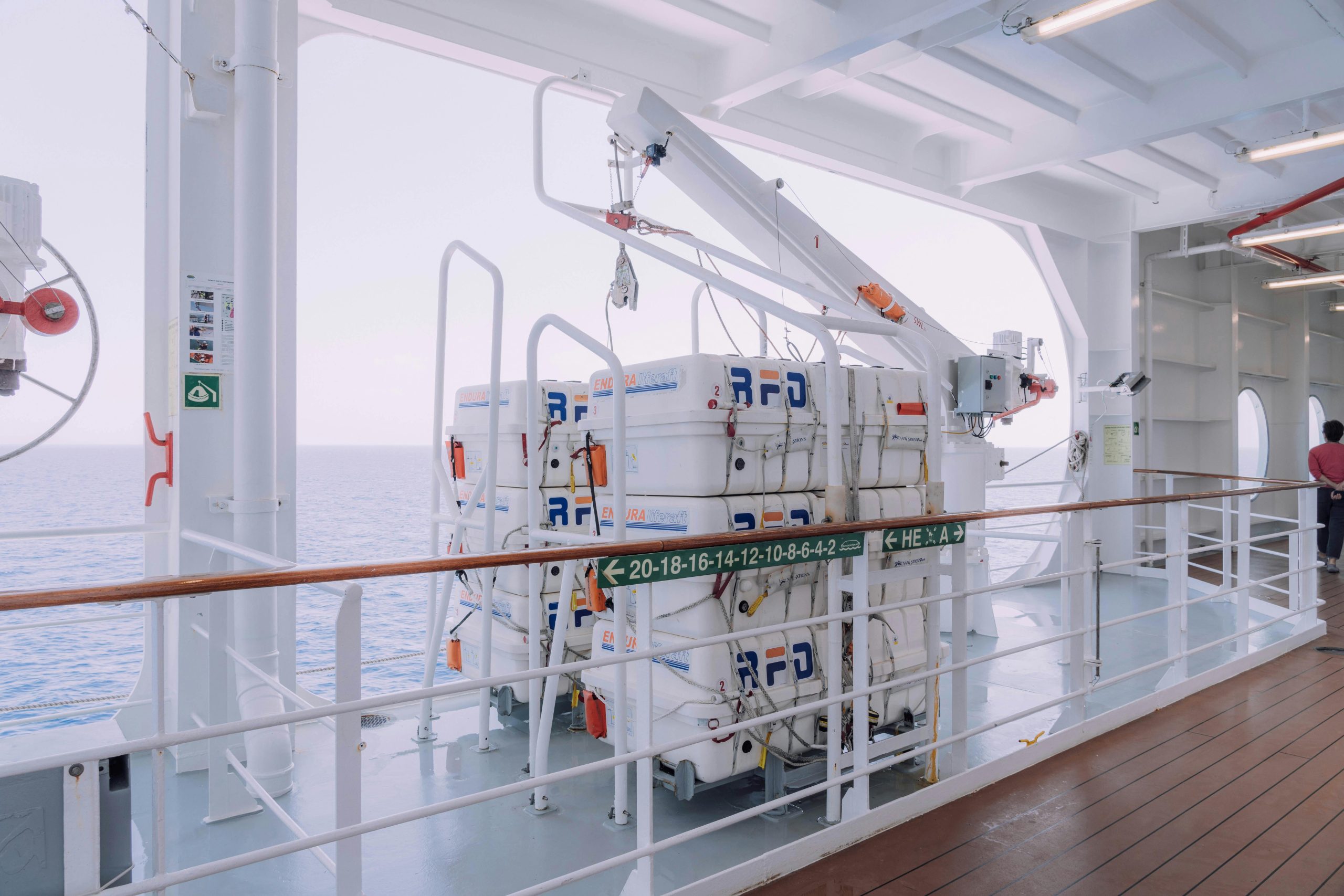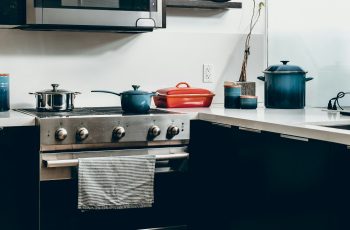Ad Blocker Detected
Our website is made possible by displaying online advertisements to our visitors. Please consider supporting us by disabling your ad blocker.
In today’s article, we will explore the topic of pressure cookers and whether or not they pose any potential dangers. Pressure cookers have become increasingly popular in modern kitchens due to their ability to significantly reduce cooking times. However, with the increase in usage, concerns about their safety have also arisen. Throughout this article, we will examine the potential risks associated with pressure cookers, as well as provide you with tips on how to safely use and maintain these appliances. So, let’s delve into the fascinating world of pressure cookers and uncover the truth behind their often-debated safety concerns.
Explaining the Concept of Pressure Cookers
Overview of Pressure Cookers
Pressure cookers are versatile and efficient kitchen appliances that have gained immense popularity in recent years. These cookers are designed to cook food quickly by utilizing high pressure and heat. They work by trapping steam inside a sealed pot, which increases the temperature and pressure, resulting in faster cooking times.
How Pressure Cookers Work
Pressure cookers rely on the basic principle that increasing pressure raises the boiling point of water. By creating a tightly sealed environment, pressure cookers prevent steam from escaping, thereby increasing the pressure inside the pot. As the pressure rises, so does the boiling point of water, allowing food to cook at higher temperatures.
Benefits of Using Pressure Cookers
Using a pressure cooker in your kitchen can provide a multitude of benefits. Firstly, it significantly reduces cooking time, allowing you to prepare meals in a fraction of the time it would take using traditional cooking methods. Additionally, pressure cookers help in saving energy due to their faster cooking times. They also retain more nutrients in food, given that the shorter cooking duration minimizes nutrient loss. Moreover, pressure cookers are an excellent tool for tenderizing tough cuts of meat, making them a popular choice among home cooks.
Understanding the Potential Dangers
Pressure Build-up Risks
While pressure cookers are generally safe to use, it is essential to understand and address the potential risks associated with them. One of the major hazards is the excessive build-up of pressure, which can occur if the pressure release valve malfunctions or if the pot is sealed improperly. This build-up can lead to accidents and injuries if not managed correctly.
Possible Explosion Hazards
Excessive pressure build-up can cause pressure cookers to explode if the pressure release valve fails or if the pot’s construction is compromised. This can result in severe injuries, damage to property, and even loss of life in extreme cases. It is crucial to follow safety precautions and guidelines to prevent such incidents from occurring.
Sealing Issues and Their Consequences
Another potential danger of pressure cookers is improper sealing. If the pot’s lid is not securely fastened or if the sealing ring is damaged, the steam can escape, affecting the cooking process and increasing the risk of burns or scalds. It is crucial to ensure the pot is sealed correctly every time you use it.

Safety Measures and Precautions
Using Pressure Cookers Responsibly
To ensure your safety while using a pressure cooker, it is crucial to follow the manufacturer’s instructions carefully. Familiarize yourself with the specific features and functions of your pressure cooker model. Ensure that you use it responsibly and according to the recommended guidelines.
Checking and Maintaining the Pressure Release System
Regularly inspect and clean the pressure release system, including the pressure release valve and the sealing ring. Any blockages or damages can hinder the proper functioning and safety of the pressure cooker. Follow the manufacturer’s guidelines for maintenance and replace any worn-out or damaged parts promptly.
Importance of Proper Ventilation
Proper ventilation is crucial when using a pressure cooker. Ensure that the vent pipe and steam vent are clear of any obstructions to allow the steam to escape freely. Failure to provide adequate ventilation can lead to excessive pressure build-up, increasing the risk of accidents.
Being Cautious with Hot Surfaces
Pressure cookers can become extremely hot during use. Always use protective oven mitts or heat-resistant gloves when handling the pot to avoid burns or scalds. Keep children and pets away from the cooking area to prevent any accidents.
Avoiding Overfilling the Pressure Cooker
Overfilling the pressure cooker beyond its capacity can cause excessive pressure build-up and pose safety risks. Follow the manufacturer’s guidelines for recommended fill levels to ensure proper functioning and prevent accidents.
Monitoring and Regulating Cooking Time
Ensure that you monitor and regulate the cooking time when using a pressure cooker. Overcooking can lead to food safety issues, while undercooking can result in unpleasant textures and flavors. Follow cooking instructions and adjust the heat and cooking time as needed.
Common Mistakes to Avoid
Opening the Pressure Cooker Too Soon
One common mistake users make is opening the pressure cooker immediately after cooking without allowing the pressure to release naturally. Doing so can result in sudden bursts of steam and potentially cause burns or injuries. Always follow the recommended pressure release methods specified in the instruction manual.
Neglecting Regular Maintenance
Proper maintenance is crucial to ensure the safe and efficient use of a pressure cooker. Neglecting regular maintenance, such as cleaning the sealing ring or checking for blockages, can compromise the cooker’s functionality, increasing the risk of accidents. Set aside time to inspect and maintain your pressure cooker to prevent any potential issues.
Using Damaged or Worn-Out Parts
Using a pressure cooker with damaged or worn-out parts can significantly impact its safety and performance. Prioritize the replacement of any damaged components, such as the sealing ring or pressure release valve, to ensure the cooker functions correctly and minimize the risk of accidents.
Using Excessive Heat
Using excessive heat while cooking in a pressure cooker can lead to unsafe pressure build-up and increase the risk of accidents. Always follow the recommended heat levels and cooking instructions provided by the manufacturer to maintain a safe cooking environment.
Using Improper Cooking Techniques
Pressure cookers have specific cooking techniques that are designed to optimize performance and safety. Using improper techniques, such as adding ingredients at the wrong time or not deglazing the pot, can affect the cooking process and potentially cause accidents. Familiarize yourself with the appropriate cooking techniques for your pressure cooker model.

Risks Associated with Using Pressure Cookers
Burn Injuries
One of the significant risks associated with pressure cookers is burn injuries. Handling a hot pressure cooker, opening it too soon, or coming into contact with its hot surfaces can result in severe burns. Proper precautions must be taken to avoid such injuries.
Explosion-Related Injuries
Although rare, the potential for a pressure cooker to explode exists if safety precautions are not followed or if there is a defect in the pot’s construction. Explosion-related injuries can be severe, causing burns, cuts, and trauma. It is critical to adhere to safety guidelines and use the pressure cooker responsibly to prevent such incidents.
Scalds and Steam Burns
Escaping steam from a pressure cooker can cause scalds and steam burns if proper precautions are not taken. Keeping a safe distance, using protective gear, and allowing the pressure to release naturally are essential measures to avoid scalds or steam burns.
Damage to Property
In extreme cases, if a pressure cooker explodes, it can lead to damage to your property or kitchen. The force of the explosion can shatter glass, damage countertops, and even start fires. It is crucial to be aware of the potential risks and take necessary precautions to prevent damage to your surroundings.
Safety Standards and Certifications
Consumer Product Safety Commission (CPSC) Regulations
The Consumer Product Safety Commission (CPSC) is a government agency that regulates the safety standards for various consumer products, including pressure cookers. Pressure cookers that comply with the CPSC regulations undergo rigorous testing to ensure their safety. Look for pressure cookers that have the CPSC seal to ensure they meet the required safety standards.
Certifications from Reputable Organizations
Apart from the CPSC regulations, pressure cookers may also have certifications from reputable organizations such as Underwriters Laboratories (UL). These certifications provide an additional level of assurance regarding the safety and quality of the pressure cooker. Look for pressure cookers with such certifications to further ensure their reliability.

Addressing Misconceptions about Pressure Cookers
Misconception 1: Pressure Cookers Always Explode
One common misconception about pressure cookers is that they are prone to explosions. While accidents can occur if safety precautions are not followed, the majority of pressure cookers operate safely when used correctly. By familiarizing yourself with the proper usage and safety guidelines, you can greatly minimize the risks associated with pressure cookers.
Misconception 2: Pressure Cookers Are Difficult to Use
Some individuals are hesitant to use pressure cookers due to the misconception that they are complex and challenging to operate. However, with proper guidance and understanding, using a pressure cooker can be quite simple. Following the manufacturer’s instructions, taking safety precautions, and familiarizing yourself with the appliance’s features are key to successful and safe pressure cooking.
Misconception 3: Pressure Cookers Are Only Suitable for Certain Dishes
Another misconception is that pressure cookers have limited applications and are only suitable for certain dishes. In reality, pressure cookers accommodate a wide range of recipes, from soups and stews to rice dishes and even desserts. With the ability to cook a variety of ingredients quickly, pressure cookers offer versatility and convenience in the kitchen.
Alternatives to Pressure Cookers
Slow Cookers
If pressure cooking isn’t your preferred method, a slow cooker can be a suitable alternative. Slow cookers allow for longer cooking times at lower temperatures, resulting in tenderized meats and flavorsome dishes. They are convenient for those who prefer a hands-off approach to cooking and want to enjoy a meal ready when they return home.
Instant Pots
The Instant Pot is a multi-functional appliance that combines the functions of a pressure cooker, slow cooker, rice cooker, and more. It offers the versatility of pressure cooking along with various other cooking methods, making it a popular choice among home cooks who value efficiency and convenience.
Traditional Stovetop Cooking
Of course, traditional stovetop cooking methods remain a reliable alternative. While it may take longer to prepare meals on the stovetop, it allows for more hands-on control and provides a sense of familiarity for those who prefer traditional cooking methods.
Choosing a Safe Pressure Cooker
Researching Reputable Brands
When selecting a pressure cooker, it is essential to research reputable brands known for their quality and safety standards. Look for brands with a solid reputation for producing reliable and safe kitchen appliances.
Reading Customer Reviews
Customer reviews can offer valuable insights into the performance and safety of specific pressure cooker models. Pay attention to reviews that discuss safety features, ease of use, and any potential concerns or issues.
Checking for Proper Safety Features
Ensure that the pressure cooker you choose has proper safety features such as pressure release valves, steam vents, and secure locking mechanisms. These features are essential for maintaining a safe cooking environment.
Opting for Newer Models with Improved Safety Measures
Newer models of pressure cookers often incorporate enhanced safety measures based on customer feedback and technological advancements. Consider opting for a newer model with updated safety features to ensure better overall safety and functionality.
Conclusion
Pressure cookers can be valuable additions to any kitchen, providing quick cooking times, energy efficiency, and tenderized results. However, it is crucial to understand and address the potential risks associated with their usage. By following safety measures, avoiding common mistakes, and making informed decisions, you can enjoy the benefits of pressure cookers while minimizing the risks involved. Balancing the risks and benefits of pressure cookers is key to ensuring a safe and enjoyable cooking experience. Always prioritize your safety and make educated decisions when using this versatile kitchen appliance.

